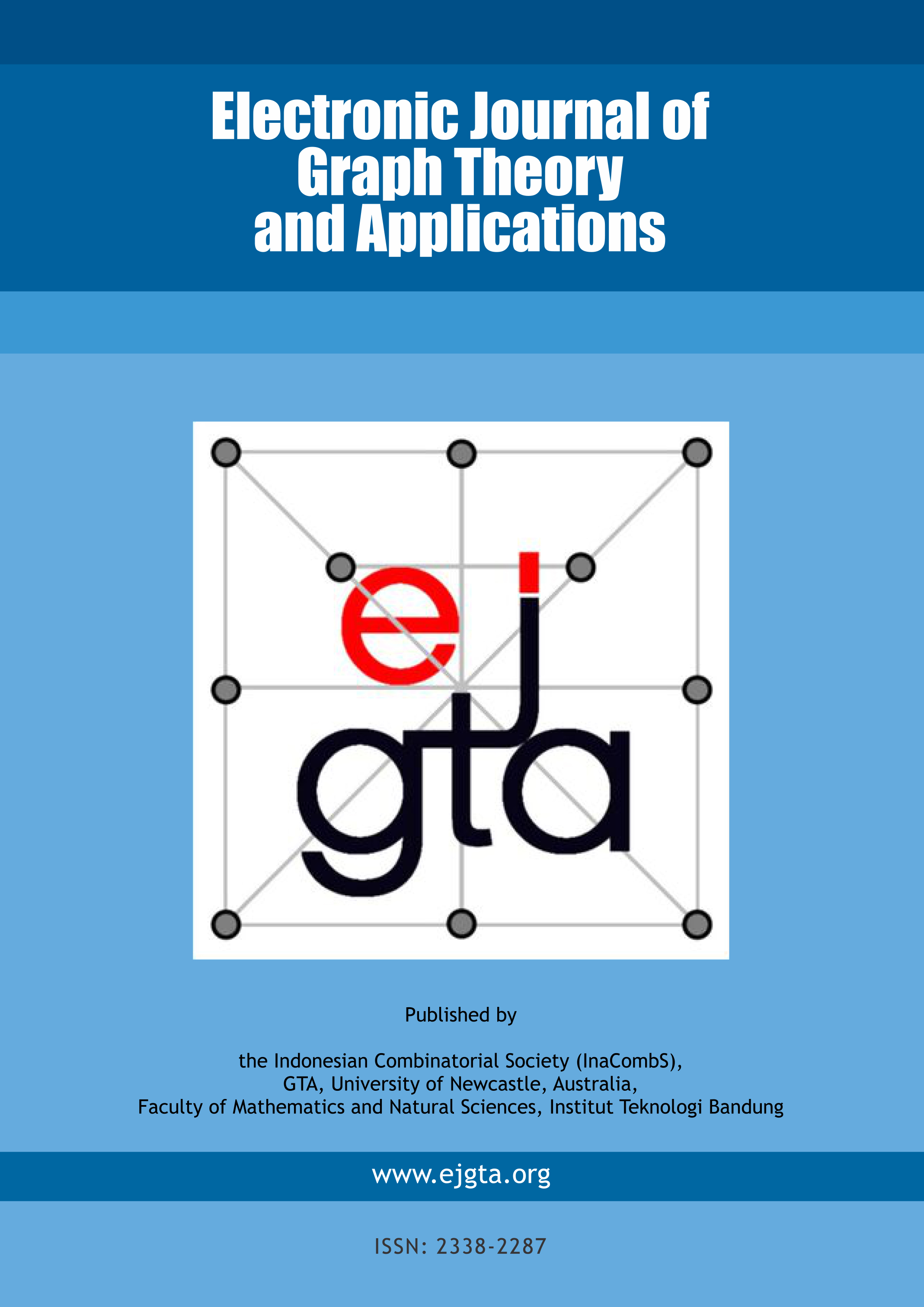Note on chromatic polynomials of the threshold graphs
Abstract
Let G be a threshold graph. In this paper, we give, in first hand, a formula relating the chromatic polynomial of Ḡ (the complement of G) to the chromatic polynomial of G. In second hand, we express the chromatic polynomials of G and Ḡ in terms of the generalized Bell polynomials.
Keywords
Full Text:
PDFDOI: http://dx.doi.org/10.5614/ejgta.2019.7.2.2
References
P. Blasiak, K.A. Penson and A.I. Solomon, The general
Boson normal ordering problem. Phys. Lett. A 309 (2003), 198--205.
L. Carlitz and M.S. Klamkin, Stirling operators. Collect. Math. XXV (2) (1974), 186--211.
V. Chvatal and P.L. Hammer, Aggregation of
inequalities in integer programming in: P. L. Hammer et al. (Eds.), Studies in Integer Programming, in: Ann. Discrete Math., vol. 1. North-Holland, Amsterdam (1977), 145--162.
F.M. Dong, K.M. Koh and K.L. Teo, Chromatic
polynomials and chromaticity of graphs. World Scientific, British library,
P.B. Henderson and Y. Zalcstein, A graph-theoretic
characterization of the PV class of synchronizing primitives. SIAM
J. Comput. 6 (1) (1977), 88--108.
N.V.R. Mahadev and U.N. Peled, Threshold graphs and
related topics. Elsevier, 1995.
M.A.Mendez, P. Blasiak and K.A. Penson. Combinatorial
approach to generalized Bell and Stirling numbers and boson normal ordering problem. J. Math. Phys. 46 (8) (2005), 083511.
R.C. Read, An introduction to chromatic polynomials. J. Combin. Theory, 4 (1) (1968), 52--71.
H.W. Zou, The chromatic uniqueness of certain complete t-partite graphs. Discrete Math. 275 (1-3) (2004), 375--383.
Refbacks
- There are currently no refbacks.
ISSN: 2338-2287

This work is licensed under a Creative Commons Attribution-ShareAlike 4.0 International License.



